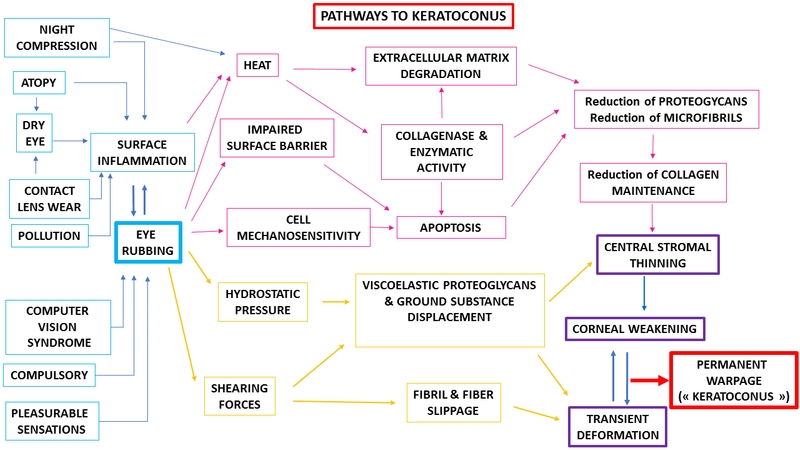

CATEGORY: Health
Too much eye rubbing can distort the cornea
Rubbing the eyes is a gesture that seems banal, but its repetition can lead to deformation and central thinning of the cornea: this is called keratoconus.
Rubbing your eyes is banal, mechanical and often pleasant. There are many reasons for rubbing your eyes: allergies, fatigue, prolonged vision on a screen, dry eyes, etc. And the ways to rub your eyes are just as varied.
Unfortunately, after months or years, some people have developed keratoconus where only the rubbed eye is affected, or both eyes, or there is an asymmetry towards the one that is rubbed more. In the vast majority of cases, the rubbed eye(s), or even the eye on which one sleeps, would be the eye(s) most affected by keratoconus.
Keratoconus is an eye disease that affects the cornea, that transparent window in the front of the eye. The cornea may thin out, curve outward and then take on a conical or pyramidal shape. This leads to vision alterations such as, for example, duplication of brilliant images on a dark background or persistent visual blurring.
This disease affects 50 to 230 people out of 100,000. Men and women are equally affected. However, studies show that Asian populations and people with Down syndrome are more affected. The disease usually appears around the twenties.
The importance of eye rubbing in the development of keratoconus has long been underestimated and is still debated today.
To better understand the effect of eye rubbing by exhaustively listing its mechanical dimension, an experiment was conducted at the Rothschild Foundation by Dr. Damien Gatinel. As part of this study, videos were made through the acquisition of dynamic MRI images from a healthy volunteer who rubbed his eyes (see source link below).
The images are impressive and reveal how the cornea, but also the eyeball as a whole and the surrounding orbital structures are abused by the simple act of doing this seemingly mundane gesture.
In view of these images, the question is no longer whether friction is responsible for the development of keratoconus, but rather how and why certain corneas resist and do not deform over time with repeated friction.
For the more scientific, here is a diagram that shows the reasons for friction and their impact on the eyes:

Possible treatments for keratoconus
Glasses can be prescribed by the optometrist. However, due to the irregular distortion of the cornea, the correction by glasses will often be imperfect.
Some specialized optometrists (like Dr. Simard here) can also offer rigid, custom-made contact lenses to optimize vision.
It is also possible to resort to surgery, or even a corneal transplant.
Source :
https://www.youtube.com/watch?v=tM4z3MYZeNk&feature=youtu.be
Pour en savoir plus :
https://opto.ca/health-library/keratoconus
https://defeatkeratoconus.com/
https://www.gatinel.com/recherche-formation/keratocone-2/no-rub-no-cone-the-keratoconus-conjecture/